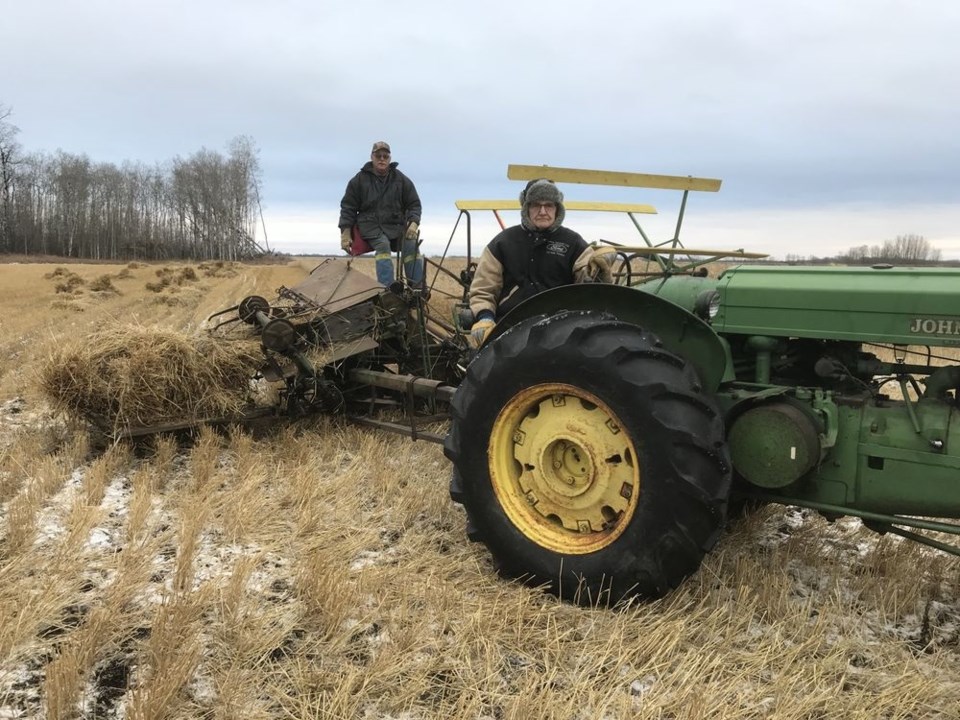Vern Poworoznyk of Sturgis firmly believes in keeping traditions of the past alive and was kept busy with cutting, binding and hauling wheat sheaves on November 4.
The sheaves will be used in threshing demonstration next summer at the Sturgis Station House Museum.
Bill German, also of Sturgis, helped Poworoznyk bind and haul the sheaves.
"It is very important to keep traditions alive, which is getting increasingly difficult in today's world," said Poworoznyk. "I love going to the field to use the old 1930 John Deere binder that was pulled by a 1952 AR John Deere. My passion stems from my childhood past when I used to help out on the neighbour’s farm when they would cut, bind, and make sheaves of grain that were threshed by a thresher. Those were the days when it took lots of volunteers to thresh 100 acres in a day.
“Every year I like to go out a use the old binder and reminisce of the past and the fun and hard work we used to do,” stated Poworoznyk.
A 1942 Farmall A tractor was used to pull the hay rack carrying all the sheaves. The binder has the capacity to make six bundles of sheaves before they are carried and tied up. The sheaves are then placed in stooks to cure and dry before threshing.
Poworoznyk had also made sheaves for threshing demonstrations in Preeceville, Sturgis and Stenen during centennial celebrations.
The practice of binding and tying cut grasses or grain stalks into sheaves is a step in the harvesting process. In earlier times, farmers cut grass and grain by hand using or scythes. Once cut, the stalks were bundled and bound into sheaves; then the sheaves were bundled together upright to dry.



